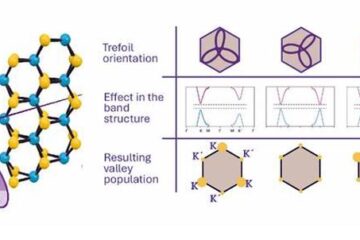Best treatment for herniated disc

Sudden back pain is often caused by a herniated disc. The intervertebral discs are a kind of buffer between the vertebrae and are heavily strained over the years. If they become brittle and break, parts of the tissue can extend outwards and press on the nerve or the spinal canal.
This can cause severe pain. The lumbar spine is particularly often affected. The herniated disc often shrinks again on its own with the support of pain and inflammation inhibiting medication, but in more severe cases surgery is necessary.
One option is to remove the exuded disc mass in order to reduce the pressure on the nerve or the spinal canal. Thanks to microsurgery, this is now a minimally invasive procedure.
The second option is to fuse the affected vertebrae. Screws are inserted into the vertebral bodies and the two affected vertebrae are permanently fused with a metal construction. This is necessary when the vertebrae are strongly displaced against each other during movement. However, stiffening is a riskier, highly invasive procedure – and often the problem only shifts as a result: the following intervertebral discs are subjected to greater stress as a consequence and can also yield.
In order to decide which operation is necessary, doctors rely on X-ray images. Usually one image is taken in the upright state and another in the forward bent state. If the affected vertebrae shift strongly towards each other or even twist, fusion is necessary – if not, decompression can suffice.
However, various studies have shown that this comparison of two static images is often not sufficient as a basis for a decision: up to one third of the patients who receive the simpler operation have to undergo subsequent surgery.
At the same time, it can be assumed that not all patients in whom the vertebrae were fused required this surgical procedure. The problem: The images only show the initial and final state of the vertebral position – and not what happens during the movement itself.
Dynamic movement patterns are crucial
Researchers from the Mechanical System Engineering Lab at Empa and the Department of Orthopaedic Surgery at the University of Pittsburgh were now able to show that the vertebrae do not move linearly during movement. On the contrary: “Depending on the patient, very different move-ment patterns appeared,” explains Empa researcher and co-director of the project, Ameet Ai-yangar.
For the study, which won the ISSLS Prize in Bioengineering Science in 2018, the researchers produced dynamic images of seven patients with herniated discs and seven control subjects in the same age group in a continuous X-ray image while slowly tilting their upper bodies forward.
From the images, the researchers calculated how the vertebrae moved in the sagittal axis of rotation and flat to each other. The results are remarkable: It would be expected, as was confirmed in most of the healthy controls, that the sagittal angle of rotation and the vertical displacement increase uniformly during movement.
Paradoxically, however, in one patient, the vertebrae first shifted in the opposite direction to the movement and then back to the center – so while the initial and final positions looked as if the vertebrae were stable, the movement showed great instability. For this individual, decompression alone would not have been of much use, but fusion would have been necessary.
The clinical analysis would have massively underestimated the instability in this person. This can be seen in the figures: if the researchers only compared the initial and final values of the images, a displace-ment value of just 0.4 mm was found. In the movement itself, however, the researchers observed a value of 4.6 mm – more than 11 times the traditionally calculated value.
In other cases, vertebrae hardly shifted – however at first did rotate strongly into opposite direction and back again. Only in two of the patients did a movement take place that roughly met expectations. Overall, each of the examined patients achieved a maximum displacement of at least 1.8 mm. In the clinical calculation, however, a displacement of less than 0.4 mm was calculated for three of the seven patients.
Technology not yet part of clinical routine
This shows that the current basis for decision-making on the type of operation is often insufficient – a dynamic assessment of the damage would be necessary. So simply replace the static X-ray machines with dynamic ones and the problem is solved? Unfortunately, it's not quite that simple: the technology required to create the dynamic images – socalled “Dynamic Stereo X-Ray” (DSX) systems – only exists in a few locations worldwide.
And the calculations of the movements are very complex. “At the moment, the technology only exists in the research stage. However, we are in the early stages of transition – one day the devices could become part of everyday hospital life,” explains Aiyangar. Until then, the researcher suggests, it might at least make sense to create and compare several X-ray images in different static states instead of just two images in end positions.
Therapy instead of surgery?
Aiyangar already has more ideas: He wants to investigate the benefit of therapy for herniated discs. 200 different muscle strands are involved in the movement and stabilization of the back. It is impossible to measure them all at the same time in order to find out which therapy offers the greatest benefit. “Modeling the complex system could contribute a lot to correct early intervention,” says Aiyangar. With the right therapy, it is hoped, surgery could even be avoided altogether.
Dr. Ameet Aiyangar
Mechanical System Engineering
Phone +41 58 765 45 08
Ameet.Aiyangar@empa.ch
Media Contact
More Information:
http://www.empa.chAll latest news from the category: Health and Medicine
This subject area encompasses research and studies in the field of human medicine.
Among the wide-ranging list of topics covered here are anesthesiology, anatomy, surgery, human genetics, hygiene and environmental medicine, internal medicine, neurology, pharmacology, physiology, urology and dental medicine.
Newest articles

Simplified diagnosis of rare eye diseases
Uveitis experts provide an overview of an underestimated imaging technique. Uveitis is a rare inflammatory eye disease. Posterior and panuveitis in particular are associated with a poor prognosis and a…

Targeted use of enfortumab vedotin for the treatment of advanced urothelial carcinoma
New study identifies NECTIN4 amplification as a promising biomarker – Under the leadership of PD Dr. Niklas Klümper, Assistant Physician at the Department of Urology at the University Hospital Bonn…

A novel universal light-based technique
…to control valley polarization in bulk materials. An international team of researchers reports in Nature a new method that achieves valley polarization in centrosymmetric bulk materials in a non-material-specific way…





















